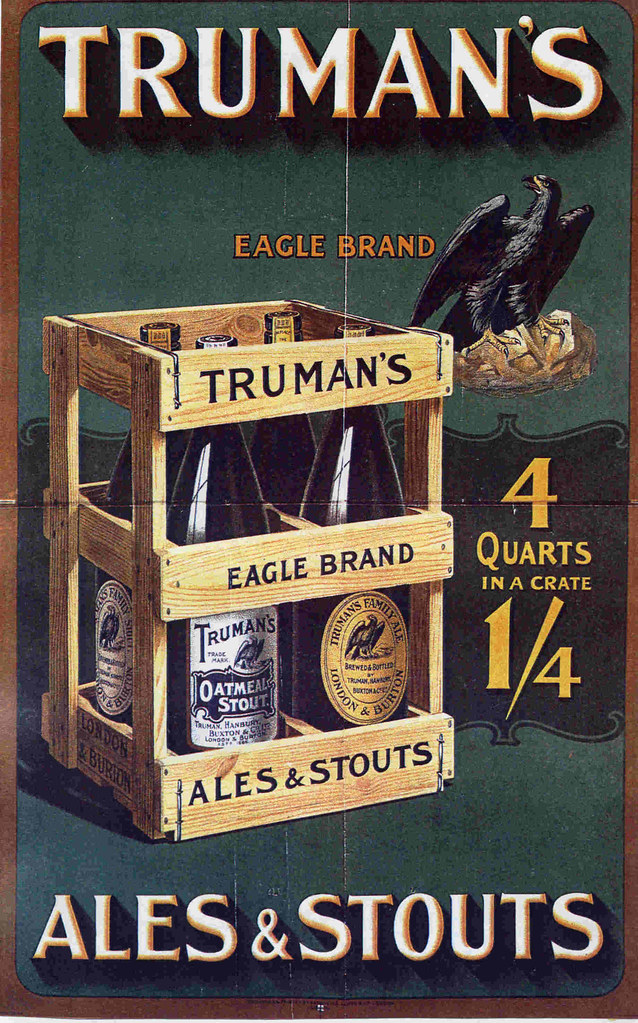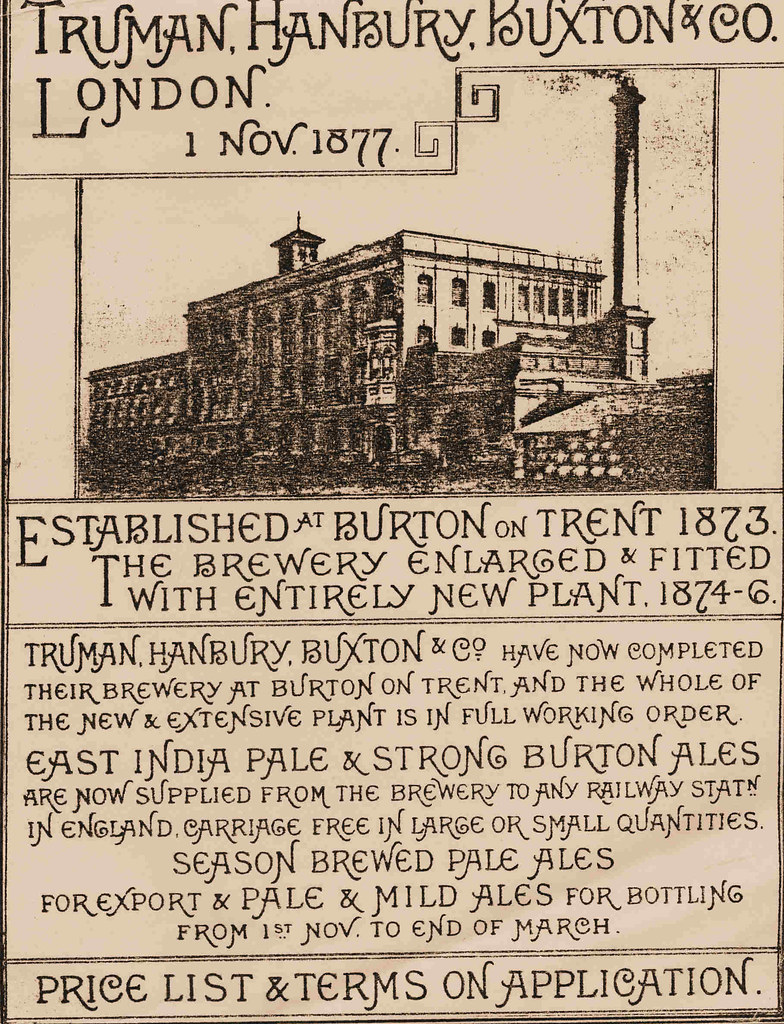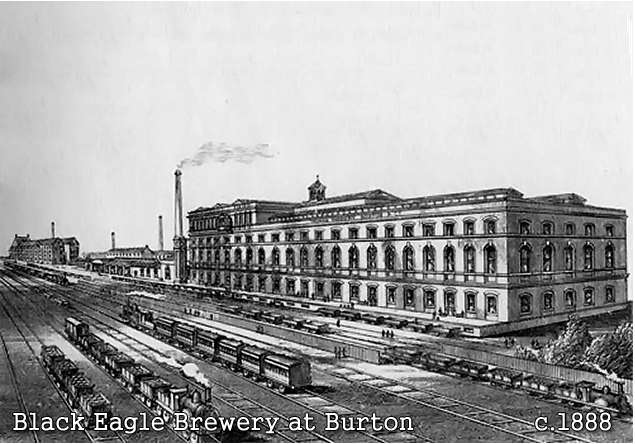
Today is the birthday of Charles Buxton (November 18, 1823-August 10, 1871). He “was an English brewer, philanthropist, writer and member of Parliament. Buxton was born in Cobham, Surrey, the third son of Sir Thomas Buxton, 1st Baronet, a notable brewer, MP and social reformer, and followed in his father’s footsteps, becoming a partner in the brewery of Truman, Hanbury, Buxton, & Co in Brick Lane, Spitalfields, London, and then an MP. He served as Liberal MP for Newport, Isle of Wight (1857–1859), Maidstone (1859–1865) and East Surrey (1865–1871). His son Sydney Buxton was also an MP and governor of South Africa.”
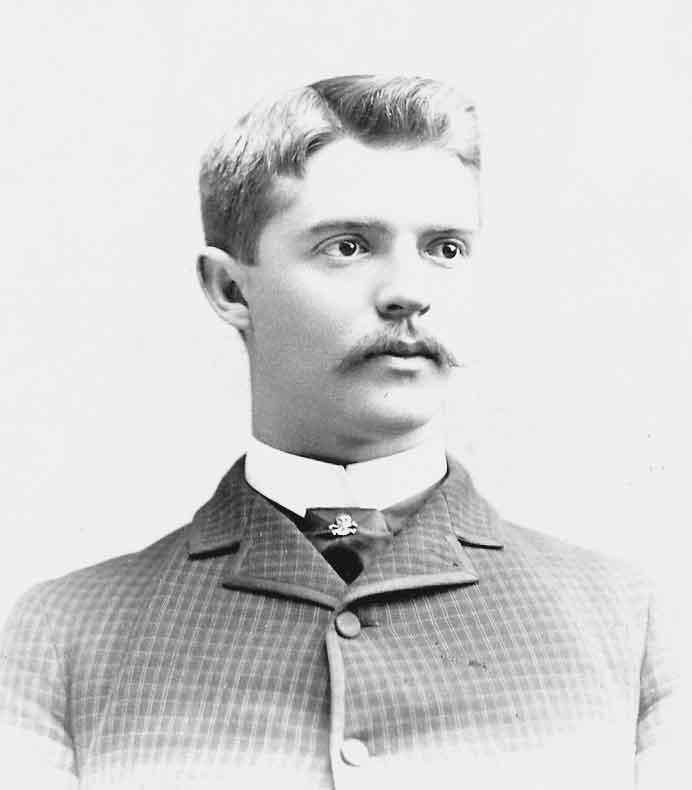
This is the image that comes up for Charles Buxton when you do a Google search, but I can’t confirm that it’s the same person.
Buxton’s father, Sir Thomas Fowell Buxton, 1st Baronet, usually known as just Fowell Buxton, was a partner in Truman’s Brewery, which had been around since 1666 as the Black Eagle Brewery.
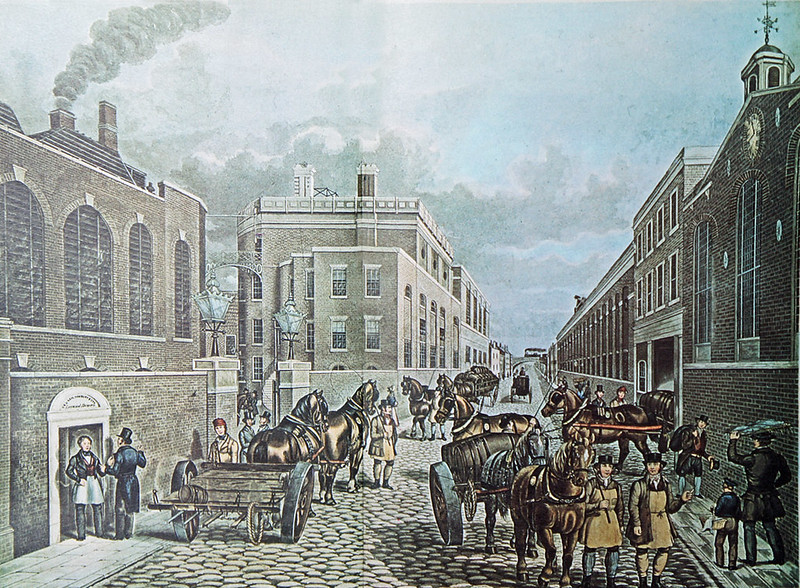
The brewery on Brick Lane in London.
The original brewery was probably established by the Bucknall family, who leased the site in the seventeenth century. The site’s first associations with brewing can be traced back to 1666 when a Joseph Truman is recorded as joining William Bucknall’s Brewhouse in Brick Lane. Part of the site was located on Black Eagle Street, hence the brewery’s name. Truman appears to have acquired the lease of the brewery in 1679, upon the death of William Bucknell. Through the Truman family’s efforts – not least those of Sir Benjamin Truman (who joined the firm in 1722) – the business expanded rapidly over the following 200 years. By 1748 the Black Eagle Brewery was the third largest brewery in London, and likely the world, with 40,000 barrels produced annually.
In the mid-18th century Huguenot immigrants introduced a new beverage flavoured with hops, which proved very popular. Initially, Truman’s imported hops from Belgium, but Kent farmers were soon encouraged to grow hops to help the brewery meet growing demand.
Sir Benjamin died in March 1780 and, without a son to take on the business, it passed to his grandsons. In 1789, the brewery was taken over by Sampson Hanbury (Hanbury had been a partner since 1780; the Truman family became ‘sleeping partners’). Hanbury’s nephew, Thomas Fowell Buxton, joined the company in 1808, improved the brewing process, converted the works to steam power and, with the rapid expansion and improvement of Britain’s road and rail transport networks, the Black Eagle label soon became famous across Britain (by 1835, when Buxton took over the business upon Hanbury’s death, the brewery was producing some 200,000 barrels (32,000 m3) of porter a year).
The Brick Lane brewery – now known as Truman, Hanbury, Buxton & Co – took on new partners in 1816, the Pryor brothers (the company’s owners were renowned for their good treatment of their workers – providing free schooling – and for their support of abolitionism). By 1853 the brewery was the largest in the world, producing 400,000 barrels of beer each year, with a site covering six acres.
However, the company also faced competition from breweries based outside London – notably in Burton upon Trent, where the water was particularly suitable for brewing – and in 1873 the company acquired a brewery (Phillips) in Burton and began to build a major new brewery, named the Black Eagle after the original London site.
In 1888, Truman, Hanbury, Buxton & Co became a public company with shareholders, but the balance of production was now shifting to Burton. The Brick Lane facility remained active through a take-over by the Grand Metropolitan Group in 1971 and a merger with Watney Mann in 1972, but it was in terminal decline. It eventually closed in 1989.
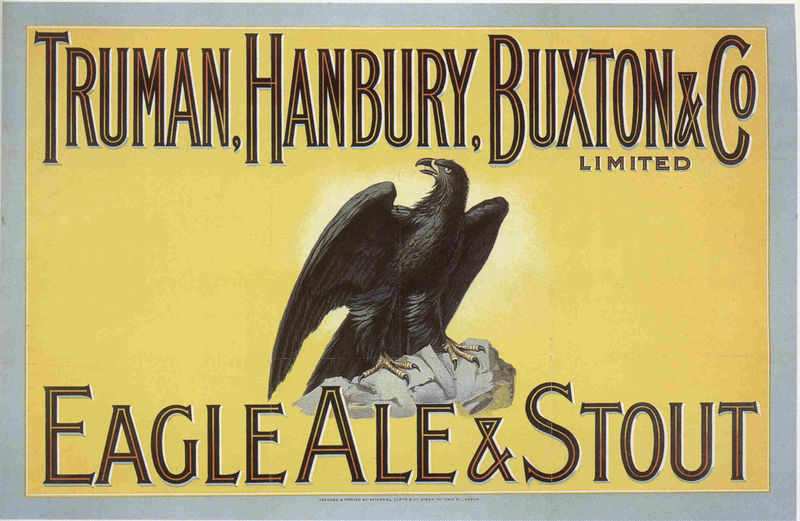
Glenn Payne wrote the Truman, Hanbury, Buxton & Co. entry for the Oxford Companion to Beer:
Truman, Hanbury, Buxton & Co. was a venerable British brewery that operated for more than 3 centuries before it closed its doors in 1988. The original brewery was built on Lolsworth Field, Spitalhope, London, by Thomas Bucknall in 1669. He was soon joined by Joseph Truman, who became brewery manager in 1694. Joseph Truman brought Joseph Truman Jr into the company in 1716 and his executor, Sir Benjamin Truman, who took ownership of the business in 1722. Two years later a new brewery, The Black Eagle, was built on nearby Brick Lane, which grew to become Britain’s second largest brewery, employing some 1,000 people. Sir Benjamin died in 1780 without a direct male heir and left the brewery to his grandsons. In the same year, Sampson Hanbury became a partner and took over control in 1789. His nephew, Thomas Fowler Buxton, joined in 1808. He improved the brewing process by adopting innovations in brewing technology brought about by the Industrial Revolution. Outside his activities in the brewery, Buxton was a renowned philanthropist, and he was elected a member of Parliament in 1818. He was associated with William Wilberforce, a leader in the fight to end the British slave trade. By the time of his death in 1845, the brewery produced about 305,000 hl of porter annually. The brewery is even mentioned in Charles Dickens’ David Copperfield (1850). Seizing upon the growing influence of Burton as a brewing center in the 19th century, the company acquired the Phillips brewery there in 1887 and 2 years later became a public company. But its fortunes declined with the shift in popular taste away from porter toward pale ale near the end of the 19th century. In 1971, the brewery was acquired by the Grand Metropolitan Group, which, in turn, was merged into Watney Mann 1 year later. Thomas, Hanbury, and Buxton ceased production in 1988 but its brewery still stands on its site in Brick Lane, London, where it has been redeveloped into a complex of residential housing, offices, restaurants, galleries, and shops.
